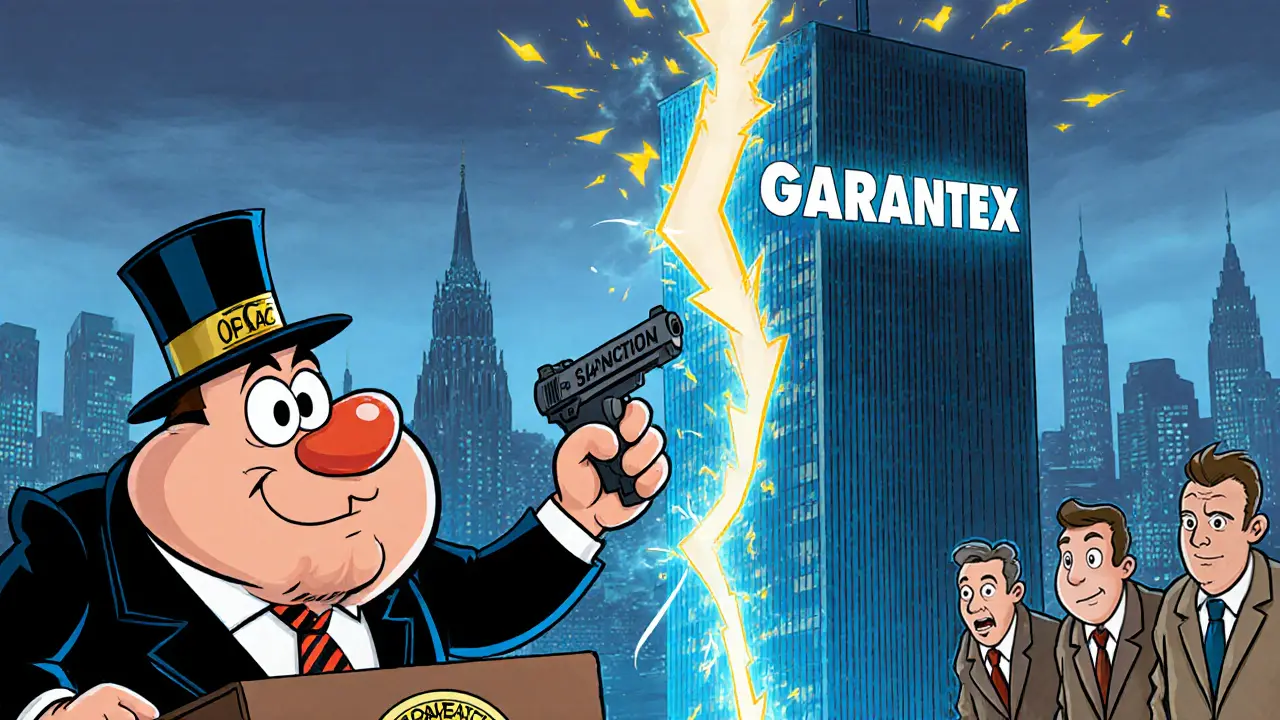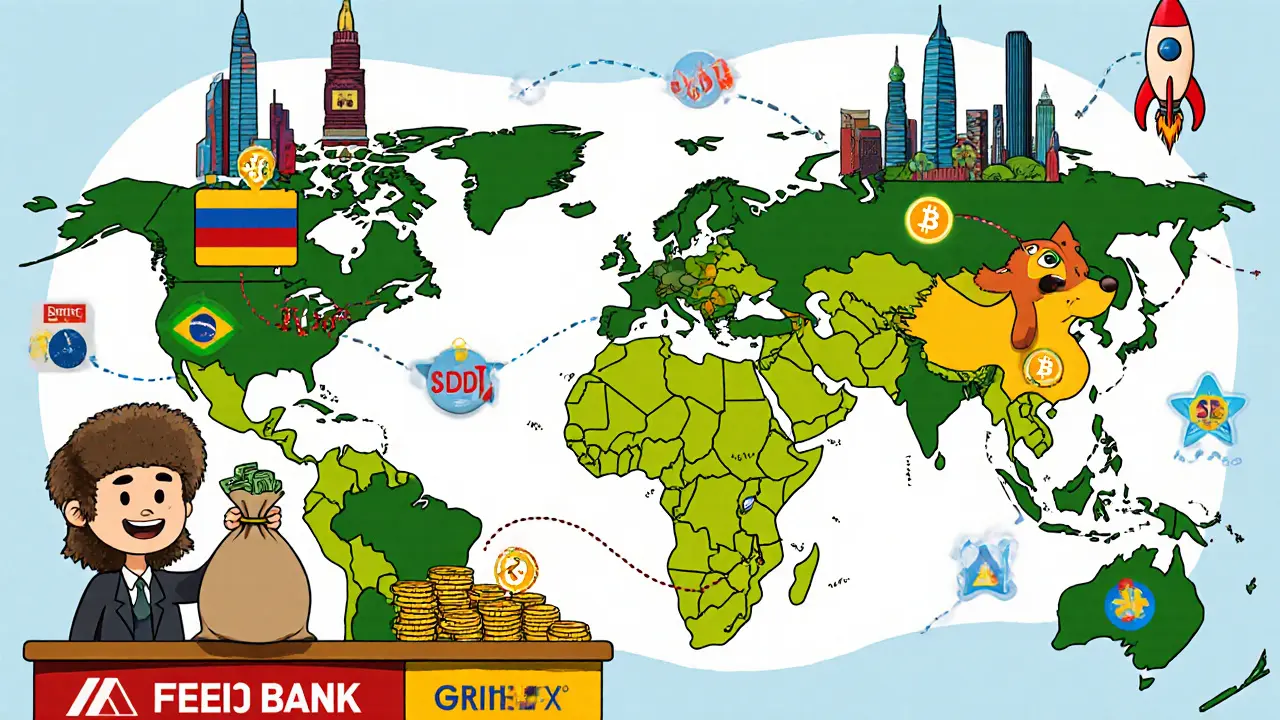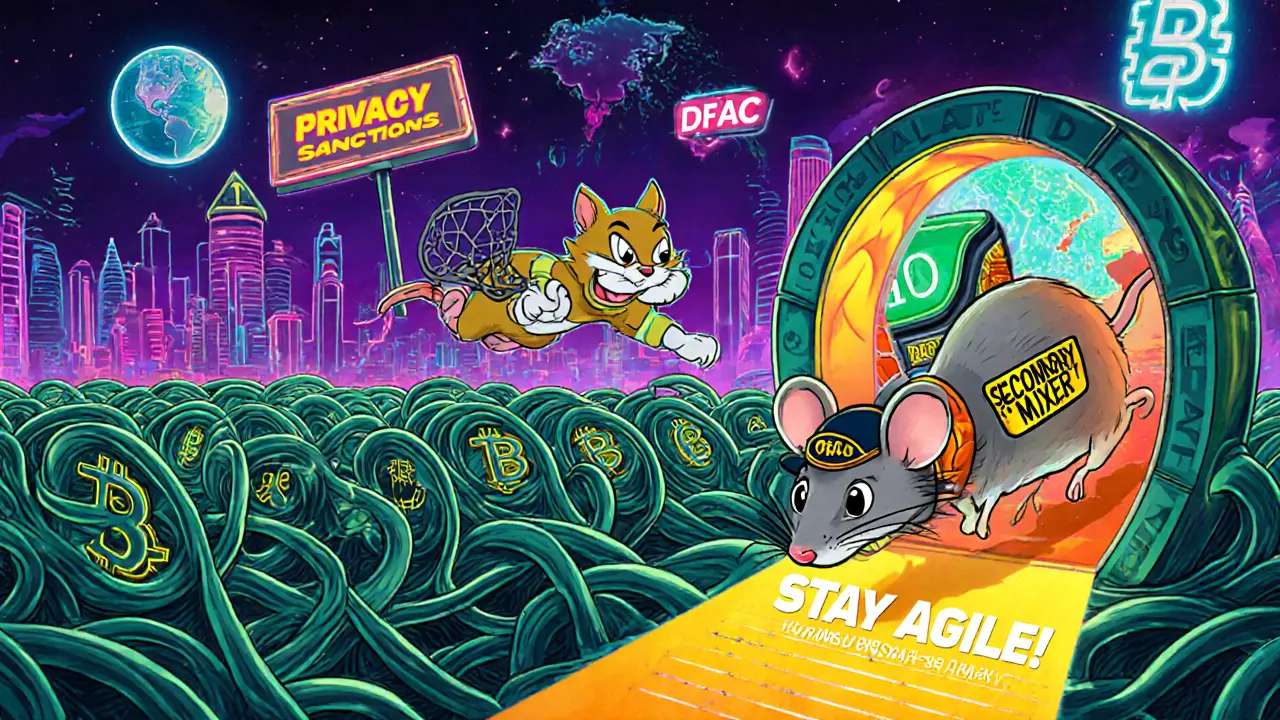
Garantex Sanctions Transaction Calculator
Transaction Fee Calculator
Estimate your costs when converting rubles to USDT through sanctioned or successor platforms
Enter amount and select platform to see your estimated fees
When the U.S. Treasury’s Office of Foreign Assets Control (OFAC the agency that administers and enforces economic and trade sanctions) slapped Garantex sanctions on the Moscow‑based exchange, the ripple effect hit every Russian crypto trader who relied on the platform to move money abroad.
Key Takeaways
- OFAC’s 2025 redesignation targets Garantex’s role in ransomware and darknet finance.
- Traders now face higher fees, longer verification times, and a fragmented ecosystem of successor platforms.
- Typical money‑flow routes involve multiple jurisdictions, making compliance and risk assessment more complex.
- Understanding the new process - from ruble deposits to USDT withdrawals - helps traders avoid legal pitfalls.
- Future sanctions are likely to tighten, pushing the ecosystem toward even more decentralized, hard‑to‑track structures.
What the Sanctions Targeted
The original sanction on April52022 cited Executive Order14024, which bars entities that support Russia’s financial services sector. In August2025, the Treasury issued a redesignation under Executive Order13694 (amended by E.O.14144 and14306). The notice accused the exchange of processing over $100million in transactions linked to illicit actors since 2019 and directly facilitating ransomware groups.
How Garantex Was Built to Evade Sanctions
Technical analyses by Transparency International Russia reveal a layered system designed to hide money trails. The core exchange (Garantex a Russian cryptocurrency exchange founded in 2019) originally operated through Estonia but moved most operations to Moscow and Saint‑Peterburg. After the 2025 crackdown, the platform split into four main successors:
- Grinex a re‑branded exchange created by former Garantex staff
- Exved a cross‑border payment processor that channels funds into dual‑use goods
- MKAN Coin a Telegram‑based crypto marketplace headquartered in Dubai
- Feilian Company Limited a Hong‑Kong entity that acts as a ruble‑to‑USDT conversion hub
These entities weave together a multi‑step flow that spans the UAE, Brazil, Kyrgyzstan, Spain, Thailand, Georgia, HongKong, and Russia.

Typical Money‑Flow for a Russian Trader
Below is the most common route documented by investigators:
- Trader deposits rubles into a personal account at Alfa‑Bank one of Russia’s largest private banks.
- Funds are transferred to Feilian Company Limited in HongKong, which holds a foreign‑exchange account.
- Feilian converts rubles to USDT (or yuan/dollars) and routes the stablecoin through Exved or directly to a partner exchange such as Grinex.
- The trader withdraws USDT to an overseas wallet, often for buying dual‑use goods or paying overseas invoices.
The whole chain can take 2-3weeks for verification, and fees have jumped from 0.1% to as high as 1.5% after law‑enforcement pressure.
Impact on Russian Crypto Traders
Below are the concrete ways traders feel the pressure:
- Higher Transaction Fees: Community forums report a 15‑fold increase, especially for USDT exits.
- Longer Onboarding: Verification now involves multiple KYC layers across jurisdictions, stretching from a few days to over a month.
- Reduced Liquidity: Many offshore wallets have frozen balances due to secondary sanctions.
- Legal Uncertainty: Using any of the successor platforms can expose users to secondary sanctions from the U.S. or EU.
- Operational Complexity: Traders must coordinate with intermediaries on Telegram bots, which often provide minimal support.
Comparison of Garantex and Its Successor Platforms
| Entity | Primary Function | Headquarters | Sanction Status (2025) | Typical Fee |
|---|---|---|---|---|
| Garantex | Centralized crypto exchange | Moscow, Russia | Designated under EO13694 | 0.2% |
| Grinex | Re‑branded exchange, same tech stack | Moscow‑City, Russia | Not directly listed, but “secondary” risk | 0.5‑1.0% |
| Exved | Cross‑border payment processor | Moscow, Russia | Sanctioned on Aug142025 | 1.0‑1.5% |
| MKAN Coin | Telegram‑based exchange | Dubai, UAE | Unlisted but monitored by OFAC | 1.2% |

Risk Management Checklist for Traders
- Verify the current sanction list for each platform before transacting.
- Document every step of the ruble‑to‑USDT conversion, including intermediary IDs.
- Maintain a separate, low‑risk wallet for outbound funds; avoid keeping large balances on any single platform.
- Stay updated on guidance from the FBI U.S. Federal Bureau of Investigation, which tracks crypto‑related crime and the Treasury’s Office of Foreign Assets Control.
- Consider using privacy‑preserving tools (e.g., mixers that comply with local law) only after consulting a legal advisor.
Future Outlook: What’s Next?
Analysts from Chainalysis predict that the sanctions‑evasion model will keep evolving. The Treasury plans to expand secondary sanctions to cover intermediaries like Feilian Company Limited and any crypto‑friendly banks that facilitate the ruble‑to‑USDT bridge. At the same time, new decentralized finance (DeFi) protocols could provide alternative pathways that are harder for regulators to trace.
For traders, the key will be agility: staying informed about jurisdictional changes, diversifying exit routes, and keeping compliance documentation airtight. The cat‑and‑mouse game is unlikely to end soon, but a proactive risk posture can mitigate the most severe financial and legal consequences.
Frequently Asked Questions
What happened to Garantex after the August2025 sanctions?
The exchange was redesignated under EO13694, its domains were seized, and $26million in crypto was frozen. In response, the team migrated operations to Grinex, Exved, and MKANCoin, creating a decentralized network that still serves Russian traders.
Can I still convert rubles to USDT using these platforms?
Yes, but the process now involves additional intermediaries (e.g., Feilian Company Limited) and higher fees. Verification takes longer, and you must ensure none of the entities you use are on the latest OFAC list.
What are the main risks of using Garantex’s successor platforms?
Risks include secondary sanctions, frozen assets, inflated transaction costs, and limited legal recourse if funds are lost. Additionally, the lack of official support means you rely on community bots, which can expose you to scams.
How can I reduce fees when moving money abroad?
Batching withdrawals, using lower‑volume stablecoins (e.g., USDC instead of USDT), and negotiating fee tiers with intermediary agents can lower costs. However, each method must be checked against sanction lists.
Is there any legal way to avoid sanctions while trading crypto in Russia?
The safest route is to use platforms that are not sanctioned and are under the oversight of Russian regulators, such as the Central Bank‑approved exchange. Any attempt to circumvent sanctions with prohibited entities can expose you to civil or criminal penalties.

Mitch Graci
October 14, 2025 AT 09:36Wow, Russia's crypto market is just thriving under sanctions!!! 😏